Steam is the leading digital distribution platform for video games, offering a vast library of games, community features, and tools for gamers and developers. With its powerful client, Steam provides an immersive gaming experience with achievements, cloud saves, and multiplayer functionality. It supports various games across various genres, making it a must-have for any gaming enthusiast.
To install Steam on Linux Mint using the command-line terminal, you have two primary methods. You can opt for the build available in the official Linux Mint repository for a quick and easy installation, or you can use the APT build provided directly by Steam for the latest version and updates.
Steam Pre-installation Steps
Update System Packages
Before installing Steam, it’s crucial to update your Linux Mint system. This step helps avoid any conflicts with existing packages.
Execute the following command in your terminal:
sudo apt update && sudo apt upgradeThis command refreshes your package list and updates all installed packages to their latest versions, ensuring a smooth Steam installation process.
Install Necessary System Packages
Linux Mint requires specific packages for the Steam installation. These packages are standard across many Linux distributions.
Install them by running this command:
sudo apt install dirmngr ca-certificates software-properties-common apt-transport-https curl -yThis command installs essential tools and libraries, such as dirmngr for managing keyrings, ca-certificates for security, and curl for data transfer, which are vital for the next installation steps.
Step 3: Enable 32-bit Support (Optional)
Enabling 32-bit support in Steam is beneficial if you’re aiming for broad compatibility with both 32-bit and 64-bit games. This is especially advantageous for systems that might run older 32-bit games. High-performance systems will also remain unaffected by this addition.
To add 32-bit architecture support, input this command:
sudo dpkg --add-architecture i386Activating 32-bit support broadens your gaming options, ensuring you can run various games on your Linux Mint system.
Proceed with Steam Client Installation
Option 1: Install Steam with the Default Repository
Install Steam using Linux Mint’s default repository. This method, while straightforward, might not provide the latest Steam version. Use the following command to install:
sudo apt install steam-installer -yThis command installs the Steam installer package from the default repository, a suitable option for standard installations.
Option 2: Install Steam with Steam APT PPA
Use the official repository for the latest Steam version. This method involves a few extra steps but ensures an up-to-date installation.
First, import the GPG key to verify the authenticity of the Steam package:
curl -s http://repo.steampowered.com/steam/archive/stable/steam.gpg | sudo tee /usr/share/keyrings/steam.gpg > /dev/nullThis command downloads and stores the GPG key necessary for secure package installation.
Next, add the Steam repository with this command:
echo deb [arch=amd64 signed-by=/usr/share/keyrings/steam.gpg] http://repo.steampowered.com/steam/ stable steam | sudo tee /etc/apt/sources.list.d/steam.listThis command creates a new source list file for the Steam repository, enabling APT to fetch packages from it.
Once done importing the gpg key and Steam repository, update your APT package database to recognize the new repository:
sudo apt updateThis step ensures that the APT package manager recognizes the newly added Steam repository.
Lastly, proceed with the installation of Steam Launcher along with the necessary libraries:
sudo apt install \
libgl1-mesa-dri:amd64 \
libgl1-mesa-dri:i386 \
libgl1-mesa-glx:amd64 \
libgl1-mesa-glx:i386 \
steam-launcherThis command installs the Steam Launcher and OpenGL libraries for AMD64 and i386 architectures, ensuring compatibility with various games.
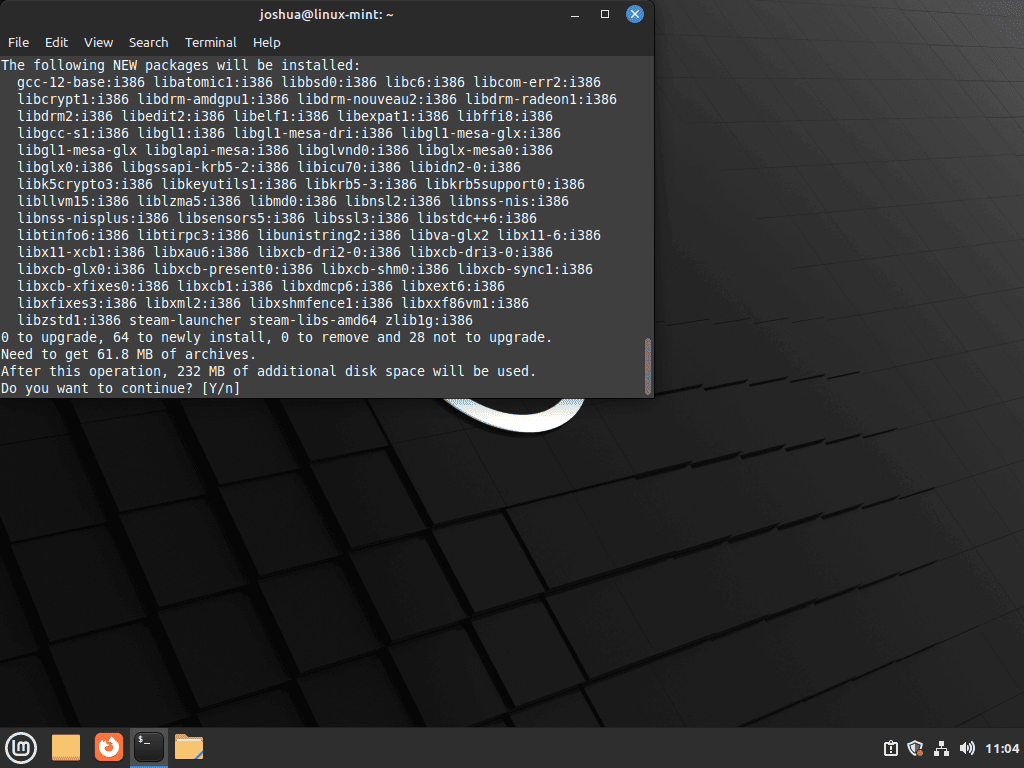
Handling Installation Prompts
A prompt to replace /etc/apt/sources.list.d/steam.list may appear during installation. To maintain default settings and continue the installation, respond with “N”.

Note: Remember to respond with “N” or else you will need to remove the source and re-import it after the installation.
After installation is complete, check the installed version:
apt-cache policy steam-launcher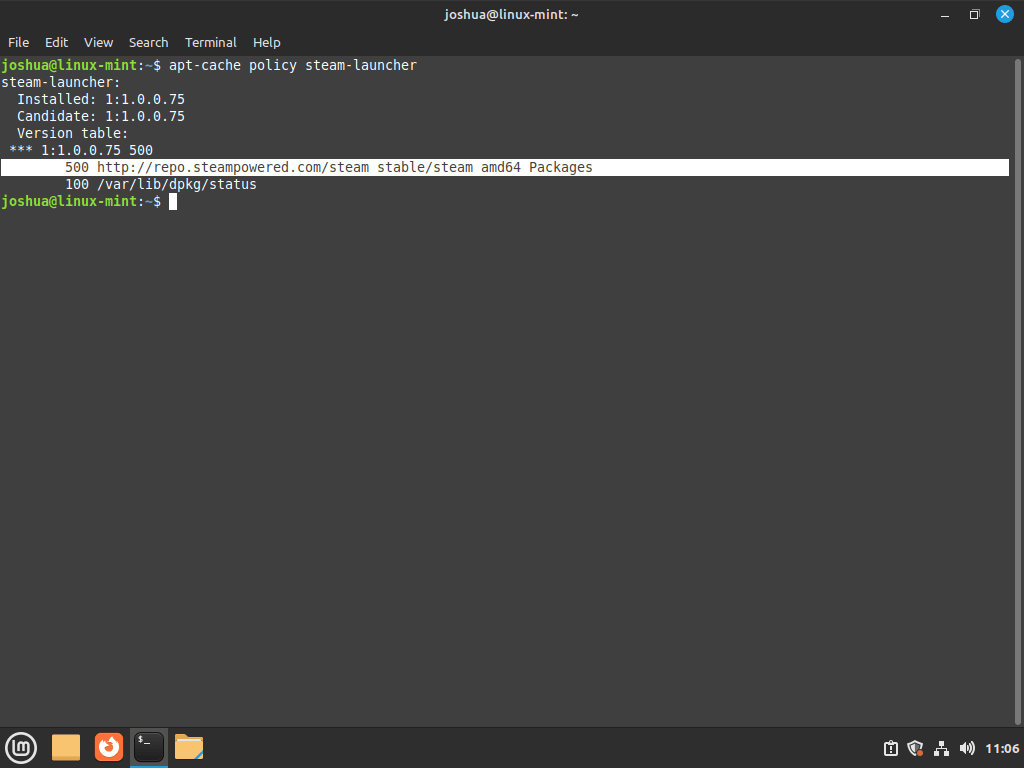
This command displays the installed Steam Launcher version, ensuring you have the desired version.
Launching Steam Launcher
CLI Command to Launch Steam
After installing Steam, you can launch it directly from the terminal. This method is efficient for users already working in a command-line environment. Use this command:
steamThis command initiates the Steam client, providing swift access to your gaming library.
GUI Method to Launch Steam
For a more graphical approach, use the desktop to launch Steam:
- Navigate to Taskbar > Games > Steam.
- Click on the Steam application icon.
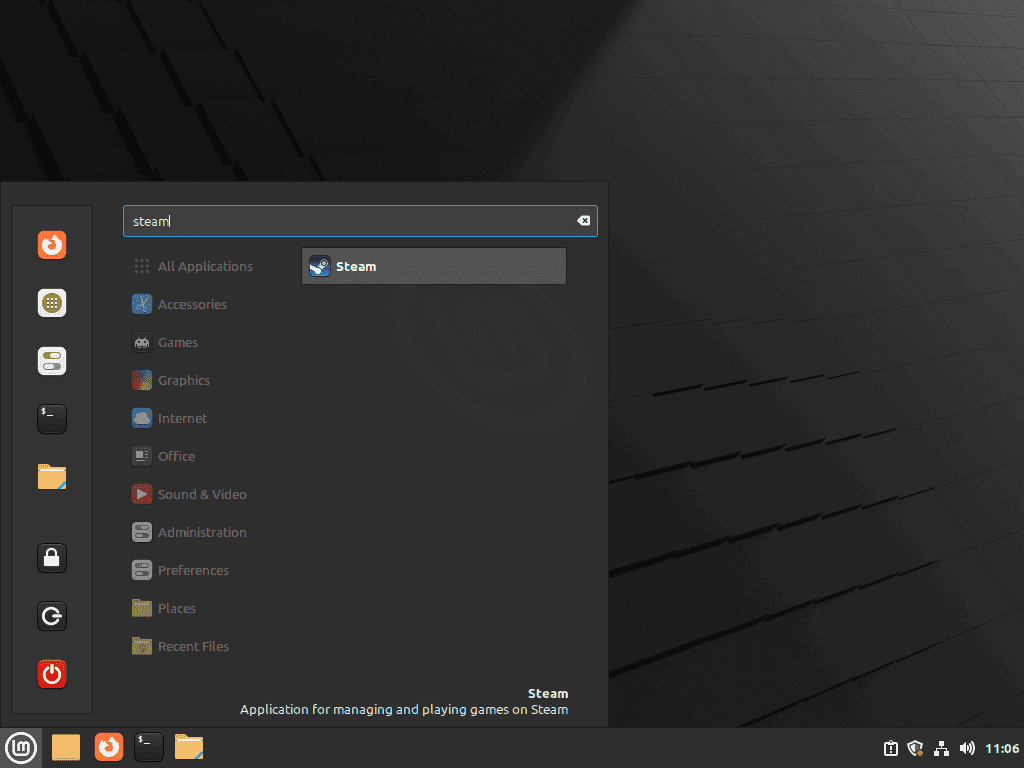
Upon launching Steam for the first time, a terminal notification appears. This message indicates the need to download additional packages for Steam’s initial setup, listing the required packages.
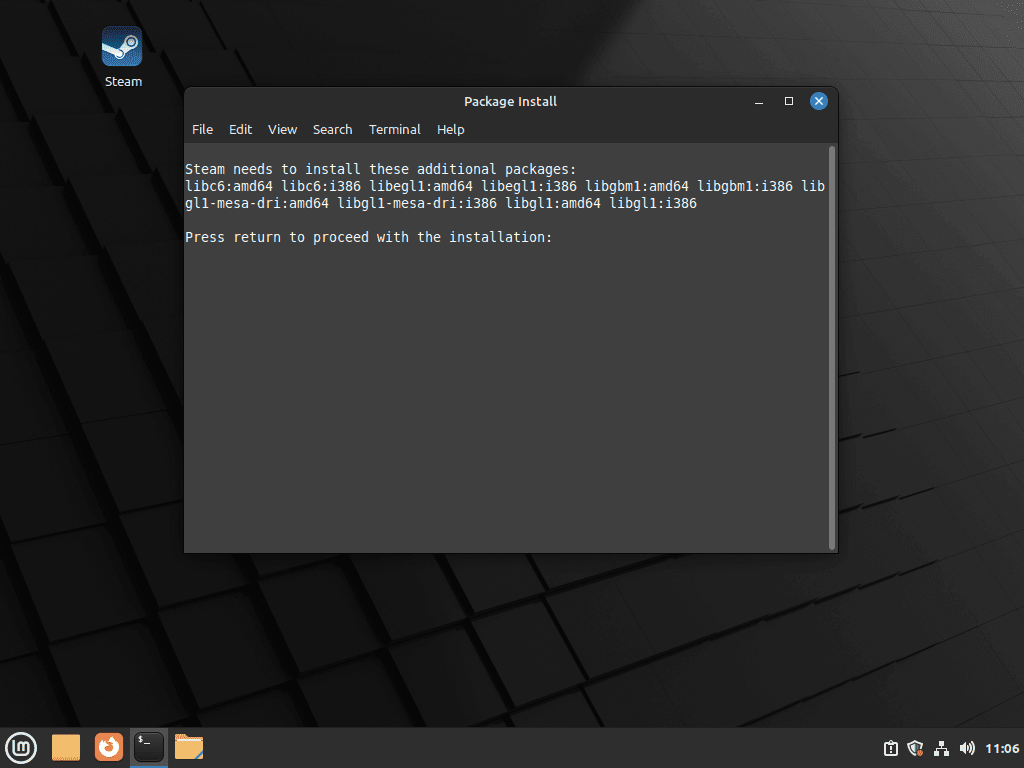
Press the return key (enter key) to initiate the installation of these packages. During this process, you may be prompted to enter your password.
A secondary terminal window will appear, instructing you to press the return key again. This step is crucial for completing the package installation.
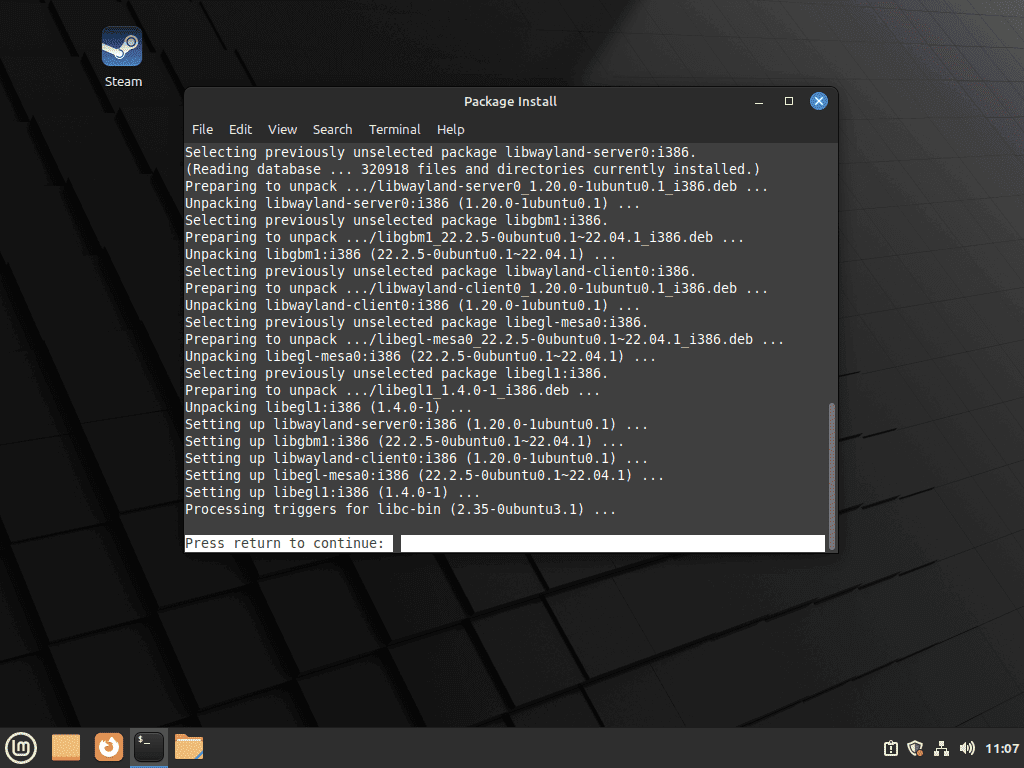
Steam’s Self-Update Process
After the package installation, Steam automatically starts downloading and updating its components. This update process typically takes a few minutes.

Steam Login Window
Once the updates are complete, the Steam Launcher login window appears. Here, you can log in with an existing account or create a new one.
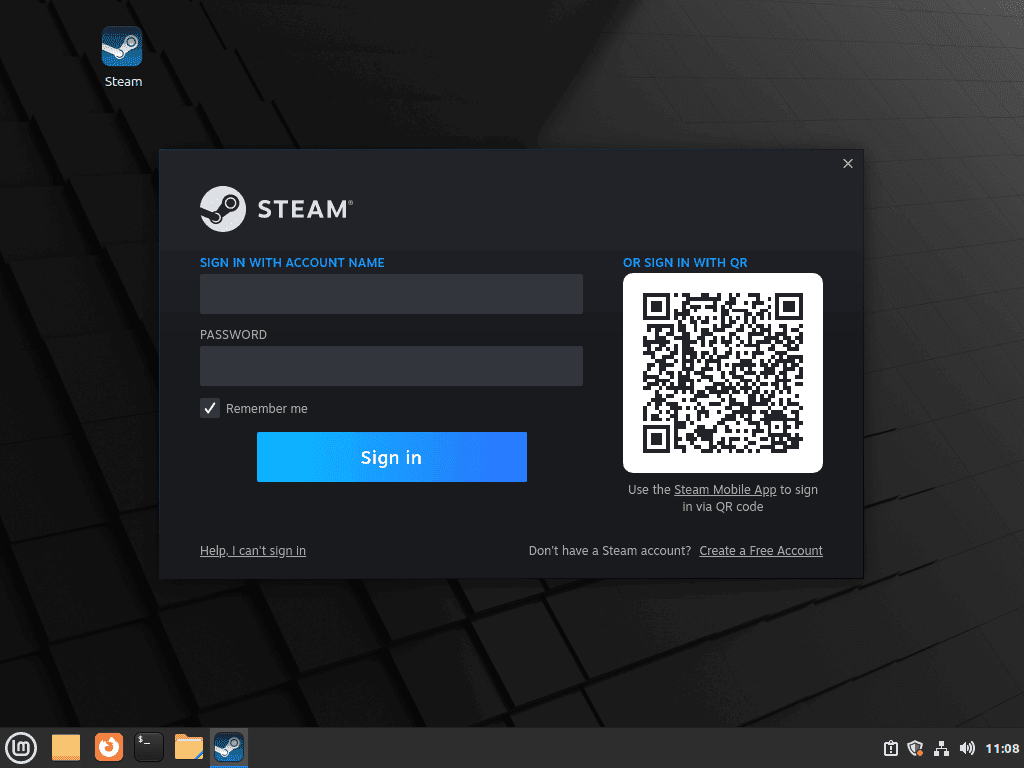
After logging in or registering a new account, the installation process concludes, granting you access to Steam’s extensive game library and features.
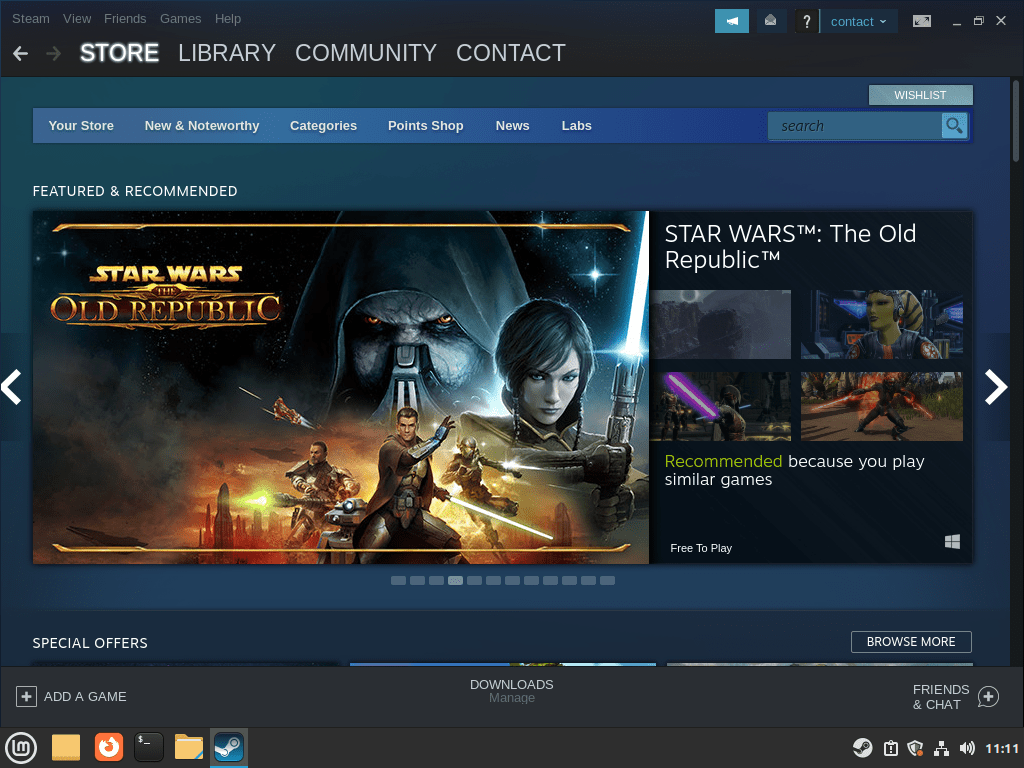
Managing Steam
Update Steam
Steam usually updates itself, but manual updates are sometimes necessary on Linux Mint. Use terminal commands to keep Steam current:
Check for Updates
Open your terminal and enter the following command to check for any available updates:
sudo apt updateInstall Updates
If any updates for Steam are detected, use the following command to upgrade:
sudo apt upgradeRemove (Uninstall) Steam Launcher
If you wish to uninstall the Steam software from your Linux Mint system, follow the steps below:
Remove Steam Software
Open your terminal and enter the following command to remove the Steam software:
sudo apt remove steam*Remove Steam Repository
If you installed Steam using the APT repositories, remove the repository with the following command:
sudo rm /etc/apt/sources.list.d/steam*Remove Imported GPG Key
If you’d like to altogether remove Steam, including the imported GPG key, use the following command. However, do not use this command if you plan to switch between the Steam APT repository beta and stable versions.
sudo rm /usr/share/keyrings/steam*Conclusion: Installing Steam on Linux Mint
With Steam successfully installed on your Linux Mint system, you can dive into a world of gaming with ease. Whether you chose the official Linux Mint repository or the APT build from Steam, keeping your client updated will ensure you have access to the latest features and improvements. Enjoy a seamless and rich gaming experience with Steam on Linux Mint.

